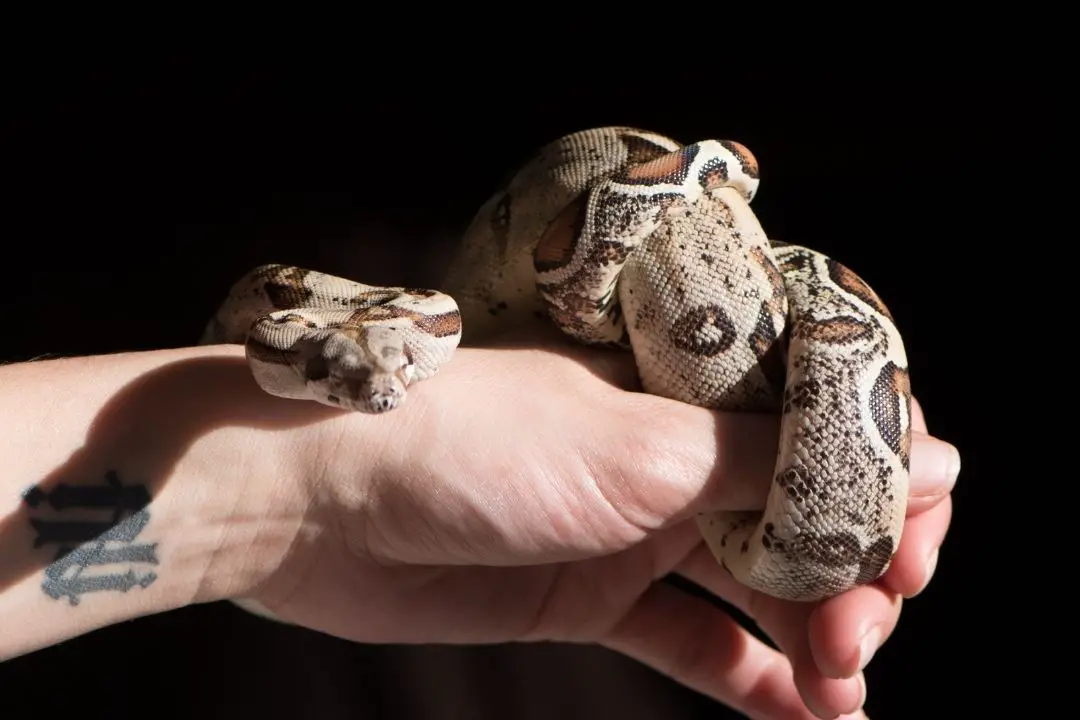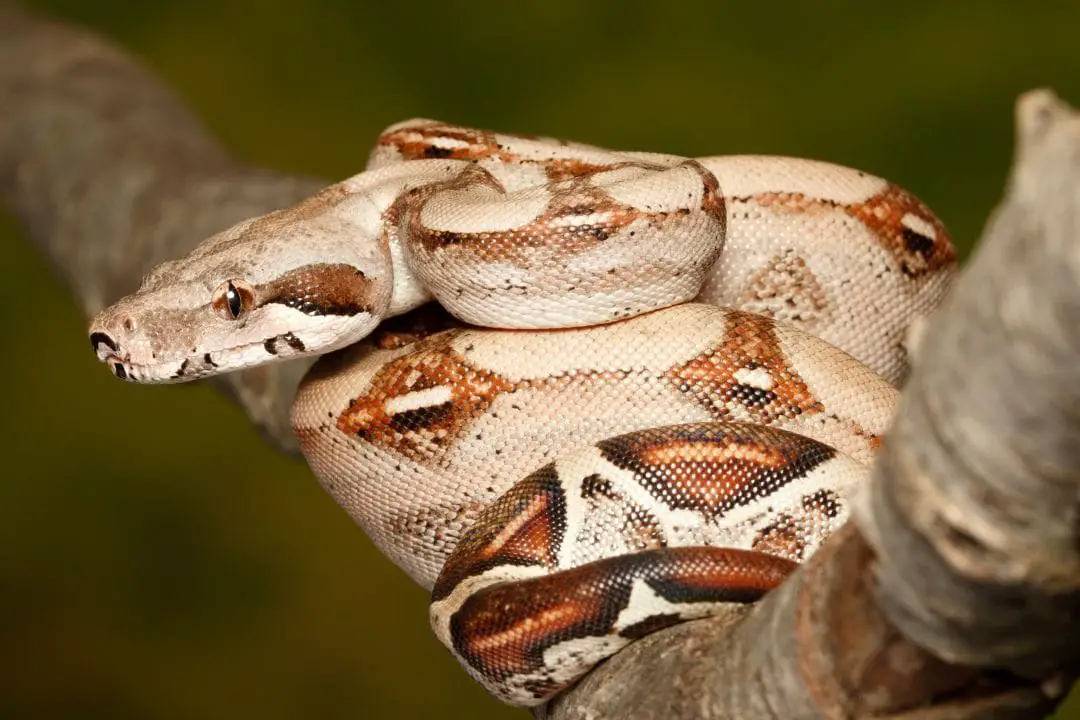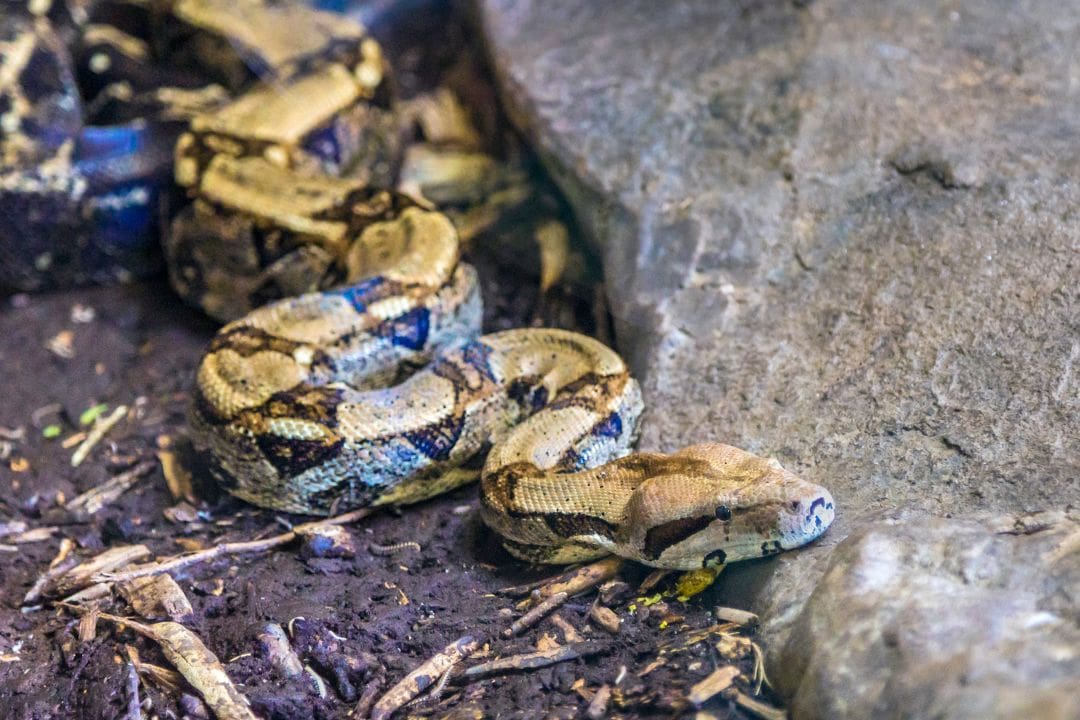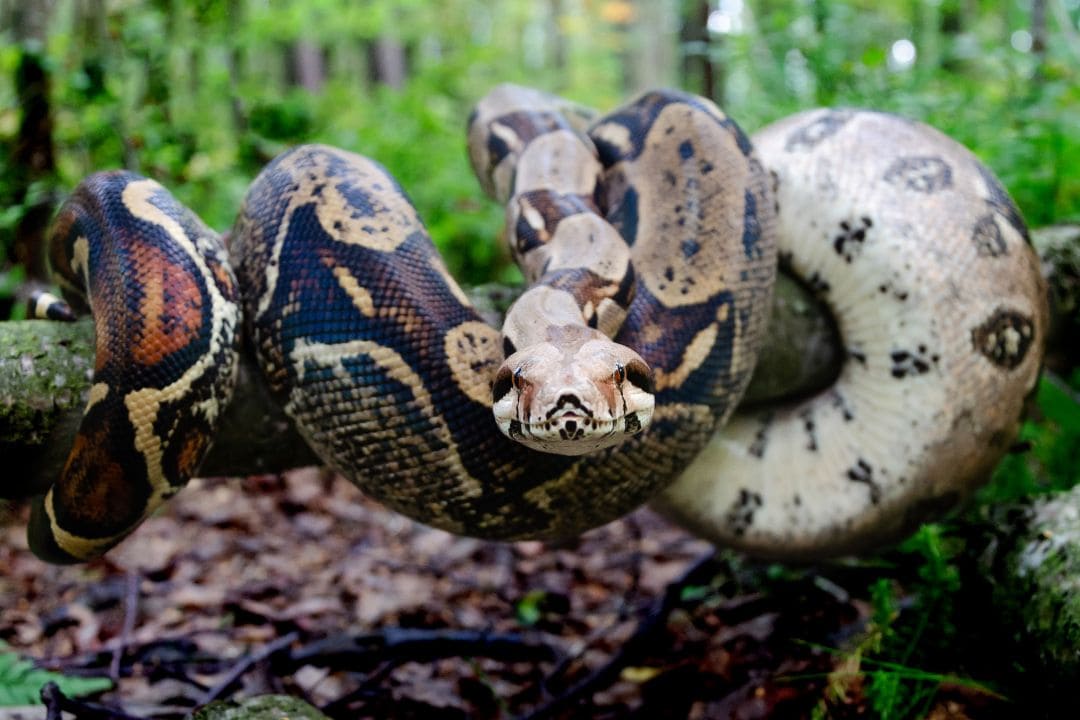The boa constrictor (Boa constrictor) is a popular pet snake that has been kept since over 100,000 animals were imported during the 1970s and 80s. Most snakes live much longer than most pets, so you may wonder:
How long do boa constrictors live?
On average, a wild boa may live to be over 20 years old. Captive snakes can live for anywhere from 10 to 15 years longer. The record for a captive boa is 40 years old.
Life Cycle
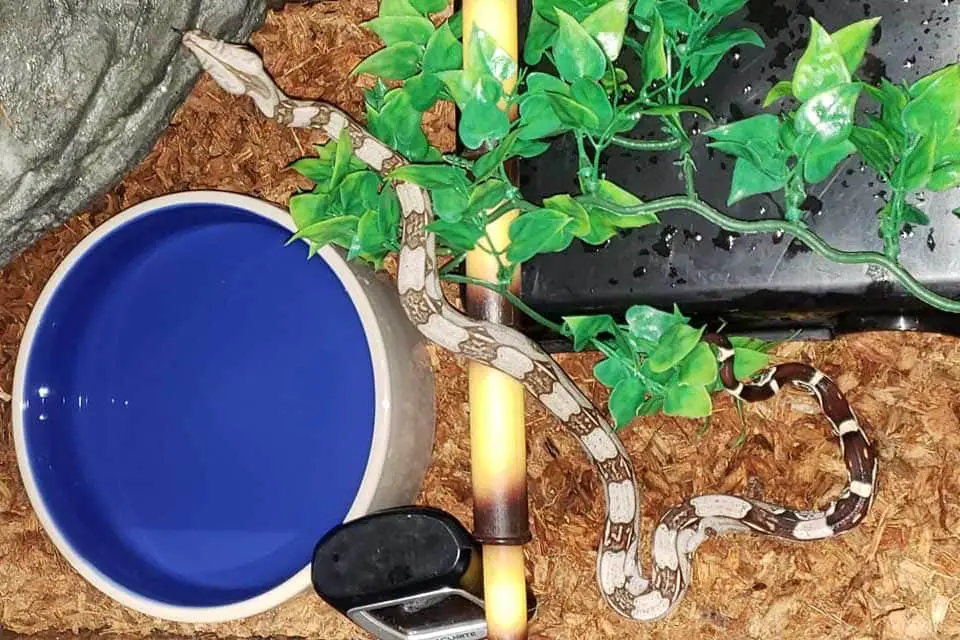
Boa constrictors are live-bearing animals, they are classified as viviparous animals. An average litter has 24 young snakes, but they can have 10-64 young in one litter.
The newborn snakes are identical to adults and are fully independent at birth. Boa constrictors grow rapidly and shed every month for the first few years of life.
They eat terrestrial vertebrates, with younger snakes targeting small animals like rodents, lizards, and amphibians. Most subspecies will eat any mammal they can fit in their mouth, but some subspecies will only eat lizards as babies.
They typically are ambush hunters, but they have been known to actively hunt for prey. Boa constrictors tend to hit sexual maturity at around 2-3 years for both males and females.
Most males will breed yearly, while females only breed when they are in good condition. Gestation lasts for 5-8 months.
Wild Lifespan
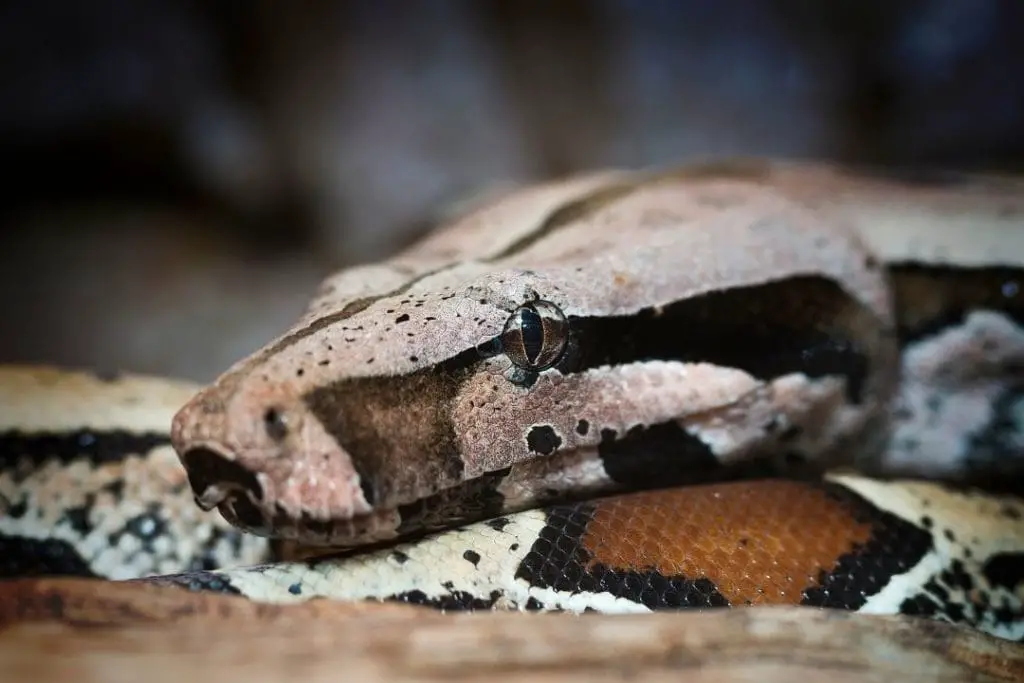
These snakes are some of the longest-lived in the wild. They can live for over 20 years. An adult faces few predators. Most dangers come from very large predators and humans. Habitat destruction is also a threat, and some populations are the targets of fear-based extermination.
Young snakes are very vulnerable to most predators, including mammals and birds. Disease, prey availability, injury, and the weather are further threats.
Snakes that can’t escape high heat or cold will perish. If a snake cannot find prey for a long enough time, it will weaken too much to subdue prey.
Disease and infection can kill snakes. Injuries from struggling prey can become infected or even prove fatal very quickly. Finding prey is a struggle for larger animals.
Finding the right size of prey gets harder as the snake grows in size. Unlike pythons, boas cannot eat very large meals in comparison to their body size.
Captive Lifespan
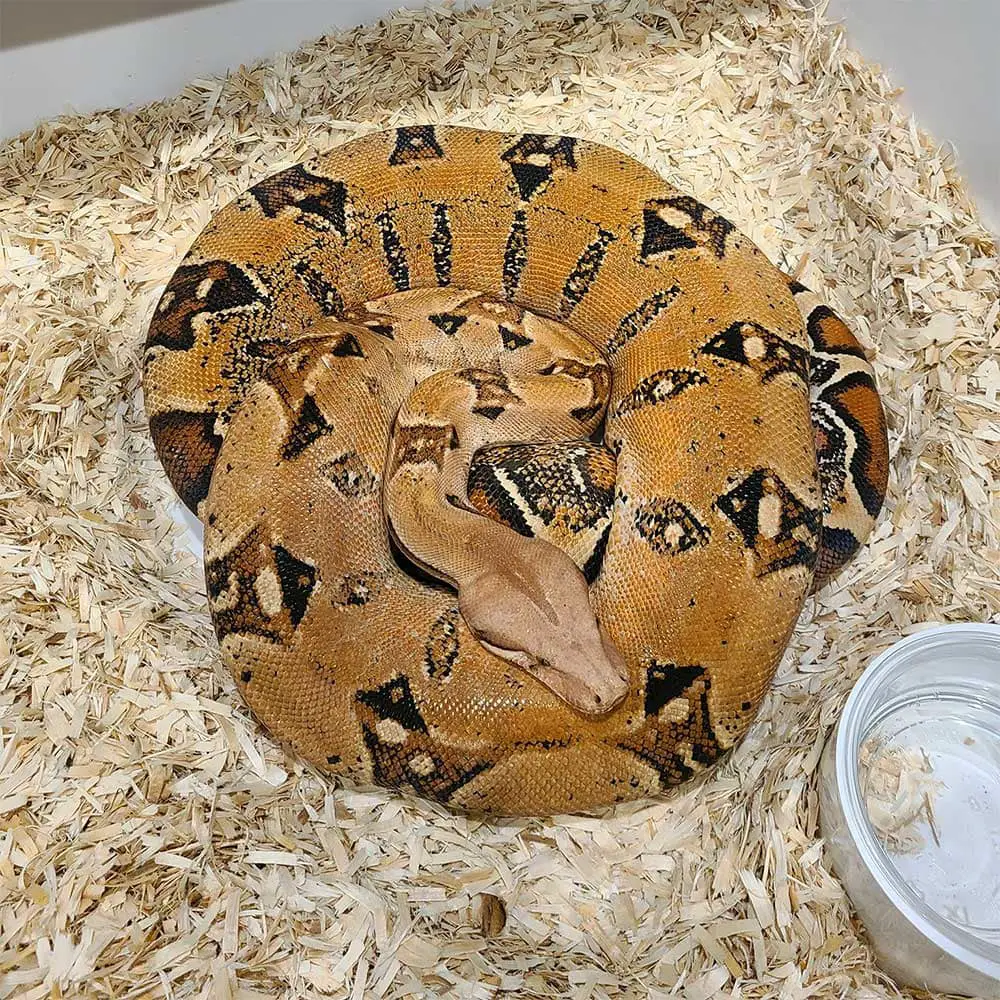
Captive boa constrictors can live for 10-15 years longer. The oldest known boa constrictor, named Popeye, lived to 40 years at the Philadelphia Zoo.
There are a number of factors that allow captive snakes to live longer. First, prey availability is assured. The snake has regular meals and plenty of water.
A well-kept snake in the right temperature and humidity will live much longer (make sure to read my complete care guide for boa constrictors here). Regular veterinary care and protection from injuries help extend lifespan.
Even when breeding, human intervention means that if there are complications, the snake is less likely to die from problems like being unable to birth the babies.
There are some threats, even in captivity. Poor husbandry shortens lifespans and even kills many snakes.
While these snakes don’t need to eat often, many owners do not learn what a healthy weight is for these snakes. They can easily under or overfeed their snakes.
Underfeeding can result in starvation and permanent health problems for young snakes, and overfeeding can stress out the snake’s organs and result in a shorter life.
Many feeder rodents also have minor deficiencies in vitamins like calcium. If you don’t supplement for your boa, it may suffer from a calcium deficiency and all the problems that accompany this. Prey items may also have parasites and some low-quality frozen prey may have been dead long before it was frozen.
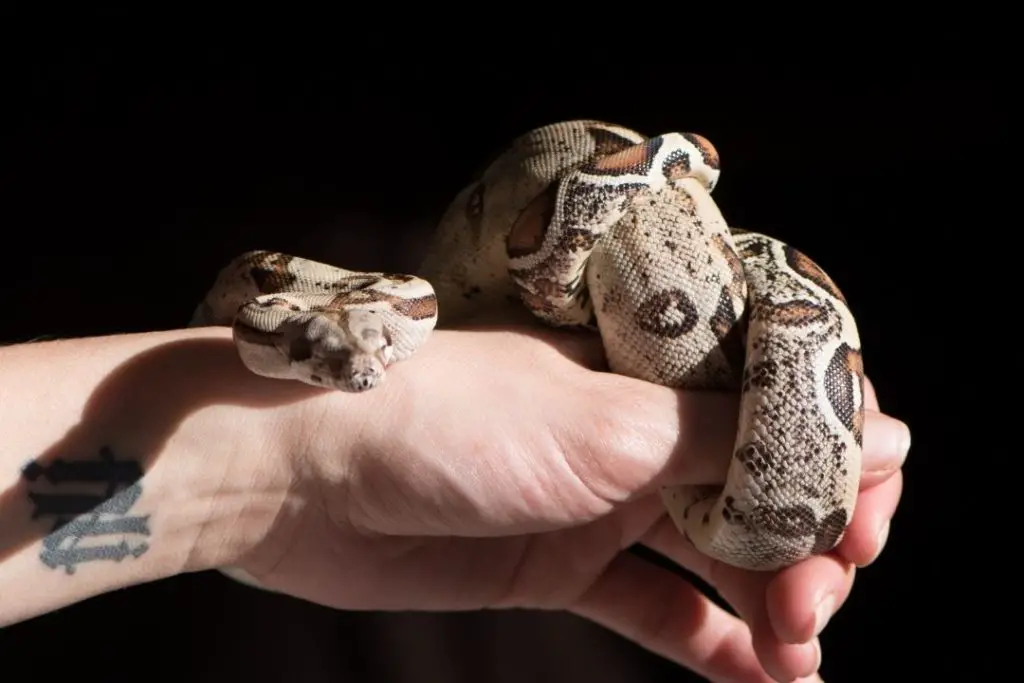
This can make the snake that consumes it very ill.
A small habitat and lack of exercise can harm boas as well. Snakes do need some exercise to stay healthy in the long run. Building an enclosure that encourages your snake to climb and explore will give it vital exercise that will help it lead a longer life. Poor conditions also harm snakes.
The temperature should stay in a range appropriate for the subspecies. Remember, if you are ever in doubt just look up the weather for the region your boa comes from.
Use a good digital thermometer and hygrometer to make sure your snake has the right conditions. An infrared temperature gun can make sure the surface temperatures are right.
Disease is another big killer for captive boas. Snakes hide illness very well since revealing weakness can invite a predator. Watch your snake’s urates and feces to make sure it is healthy. You should also watch for problems like mites and respiratory infections.
Burns and abrasions are another risk, such as if your snake gets access to the heater or rubs a rough spot on a decoration. These wounds need treatment just like yours do. Keep a reptile first aid kit near your snake so you can treat any injuries promptly.
Another big issue is Inclusion Body Disease.
The exact cause isn’t currently known. It may be a virus that is transmitted by mites. It has only been reported in adults and subadults, but some keepers have claimed to have seen the disease in babies. This disease can be detected with a blood test. Early symptoms include regurgitation.
Later on, the snake will develop neurological symptoms like stargazing, corkscrewing, and other balance problems. This disease cannot be treated at the time of writing.
An affected snake will need euthanasia. Since this is contagious, any other boas you own are at risk. Always quarantine snakes and opt for all the testing you can for a new boa.
Conclusion
Boa constrictors can live for decades. If you buy a baby, that snake will be with you for most of your life.
Make sure you are prepared for this. If you have any questions or comments, please leave them below.
